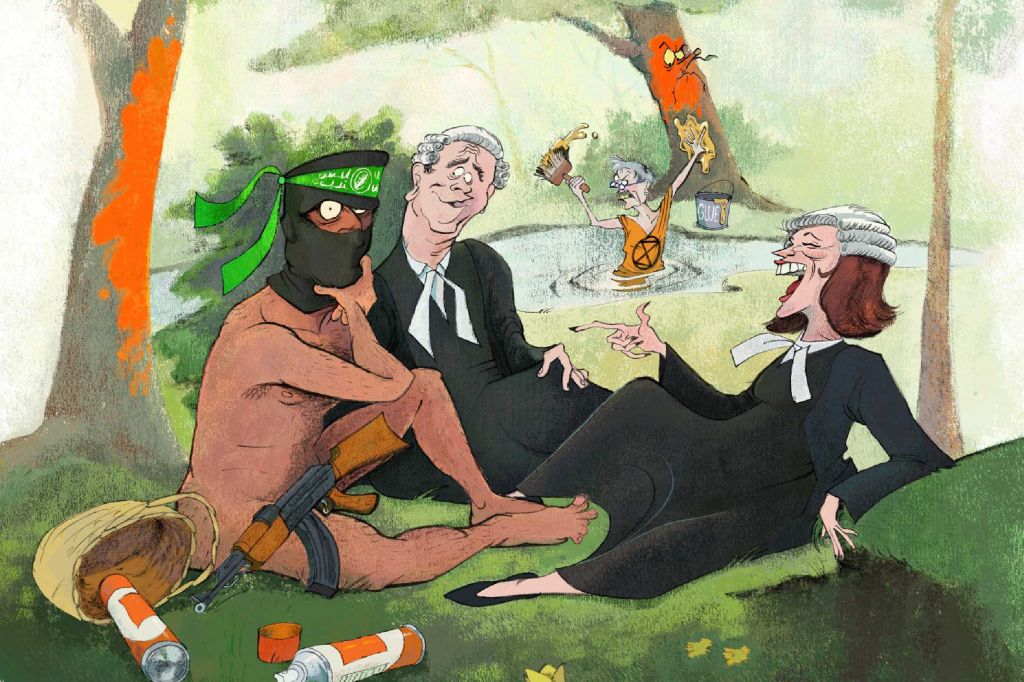
Since reading Helen Gordon’s The Meteorites, I keep catching myself in imaginary conversation with an Essex thatcher called Frederick Pratt. On 9 March 1923, he was working in a wheat field at Ashdon Hall Farm, near Saffron Walden, when he heard a strange ‘sissing’ sound and looked up to see ‘the earth fly up like water’. He later dug up, from a depth of two feet beneath the surface of the field, a stone weighing 1.27kg that had fallen from the sky. He took it to the police station, then on to the vicar, who shipped it off to the Natural History Museum.
There we know it was classified as a stony chondrite meteorite, composed of feldspar, pyroxene and olivine, white specks of nickel iron and other oddments from which the solar system was formed 4.5 billion years ago. The smooth ‘face’ of the conical rock was understood to have been melted into a shield by its hypersonic flight; the back end was wobblier.
What we don’t know is what Pratt made of his astonishing experience. (On average, only ten meteorites are seen in the sky and recovered each year.) As a veteran of the first world war, was he traumatised over again by the mud-churning missile, or inured to that kind of thing? Did his encounters with the law and church lead to questions of science, philosophy and faith? While there’s a wooden post marking the site of the crater left by the Ashdon meteorite, nobody knows where Pratt is buried.
Historically, meteorites have been worshipped and feared around the world. Gordon explains that the earliest recorded meteorite fall (believed to have landed in Ngoata, Japan around AD 861) was placed in a Shinto shrine and is still drawn through the streets on a decorated cart every five years. Conversely, when a meteorite fell in Tenham Station, in Queensland, in 1879, the First Nations locals were reported to be ‘deadly afraid’ of the fragments and covered them in kangaroo grass and branches to hide them from the sun, hoping to prevent further assaults from space.
Meteorites continue to fuel the beliefs of conspiracy theorists. Those who argue that aliens were responsible for the civilisation of ancient Egypt base some of their thinking on beads found around the neck and waist of a boy buried in the village of el-Gerzeh, 40 miles south of Cairo, c.3,400-3,100 BC. They’re the earliest man-made iron artefacts and were hammered into shape 2,000 years before it’s thought humans discovered smelting. While the conspiracy theorists maintain this proves aliens made the beads, archeologists believe they’re of meteorite origin – like the dagger found in Tutankhamun’s tomb. Other conspiracy theorists deny it was a meteor strike that wiped out dinosaurs more than 66 million years ago.
Gordon, who teaches creative writing at the University of Hertfordshire, writes with the enthusiasm of a teacher channelling the adult incarnation of everyone’s inner ten-year-old nerd. Space and sarcophagi and stegosauri – oh my! She finds scientists who argue convincingly that while little green men didn’t build the pyramids, it’s highly likely that the soupy origins of life on Earth may owe a debt to space rocks. She’s the kind of chummy author who’ll tell you that a cross section of most meteorites resembles a bitten-into Mars Bar or Milky Way. Who knew our treats were so aptly named?

She attends the 8th Planetary Defense Conference in Vienna – organised by the United Nations Office for Outer Space Affairs – and offers some reassurance that governments began taking the threat from space rocks more seriously after the 1998 release of the Hollywood disaster movies Deep Impact and Armageddon. The arrival of the 14,000 ton Chelyabinsk meteor in February 2013 also sharpened minds. Its explosion 30km above Russia released 30 times as much energy as emitted by the atomic bomb detonated at Hiroshima, injured 1,500 people and caused £11 million damage. Nobody saw it coming, and to date we’ve only detected a total of seven meteorites before collision was confirmed – the physics behind this being that they’re ‘very dark’ and therefore tricky to spot in the blackness of space. Mercifully, in 2027 Nasa will turn on the first telescope dedicated to hunting asteroids and comets – if we’re spared that long.
More entertainingly, Gordon also visits a meteorite fair in France. There she’s allowed to touch a piece of the moon, but learns that lunar souvenirs are slumping in price while Martian rocks are soaring. It seems that today’s super-rich are all fighting to get the best bits of space on their desks. Celebrity collectors include Steven Spielberg, Nicolas Cage, Uri Geller and Yo-Yo Ma. The world’s largest private collection is owned by Naveen Jain (the founder of the search engine InfoSpace). Not wanting to be excluded, I had a look online and found a pretty little slice of pallasite meteorite, studded with olive green crystals like a panettone, for £37 on eBay.
Most appealing for readers with treasure-hunting children is the idea of space dust. Gordon reveals that in the dust on roofs of large buildings such as schools there will be on average six ‘micrometeorites’ per square metre. You can collect these by placing a magnet in a sandwich bag to suck up all the metallic material. Pluck them from the plastic with tweezers and check them under a microscope. So that’s what I’ll be doing this weekend, while chatting with the ghost of Fred Pratt.








Comments